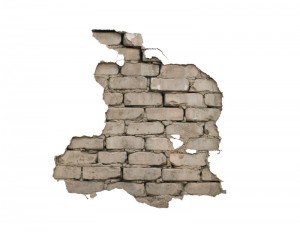What would you say if we told you that water damages masonry chimneys more than fire? Believe it or not, it’s true! Unfortunately, the damage water does to masonry chimneys is usually a slow and subtle process; the problems typically aren’t evident until it’s more than just a simple fix.
So what should you do if you discover you have a water problem? Address it immediately before it gets seriously out of hand. Get ahead of the game and protect your biggest asset — your home.
Do you have damaged flashing?
Chimneys are notorious for leaking, and the culprit is almost always the flashing, which lies at the point where the chimney rises above the roof. It keeps water out of the chimney, protecting both the flue and roof. Flashings are made from a variety of materials (e.g., aluminum, copper, galvanized steel, and/or tin).
You’ll want to have new chimney flashing installed is it’s missing, rusted through, falling out or completely covered with roofing tar (a common short-term fix that’s sure to be hiding bigger problems). Many homeowners also opt to have new flashing installed when having new shingles put on because they want it to last as long as the new roofing.
Are your bricks spalling?
Chimneys usually show damage more than other parts of your home because they are more exposed. As you might expect, the top portion of your chimney will show the first signs of moisture intrusion issues. By the time bricks spall, the damage has already been done. These bricks cannot be repaired and, instead, must be replaced.
It may be tempting to cut a few corners in an attempt to save money and replace only a few spalled bricks or only do a partial rebuild of your chimney; keep in mind, however, that your entire chimney will need to be rebuilt at some point, and, as such, any partial repair will only be a temporary fix. You can put lipstick on a pig, but it’s still a pig.
Is your mortar cracking and/or crumbling?
Because of the inherent nature of the materials used to build traditional masonry chimneys, with the lone exception being those that have been adequately waterproofed, water is naturally going to soak into the bricks and mortar. This water intrusion ultimately speeds up the weathering process and causes premature aging.
The mortar between the bricks cracks and crumbles over the course of time because of this constant exposure to the elements. The damaged mortar eventually crumbles and falls away, leaving open areas between the bricks that will allow even more water to invade your chimney. This leads to even more issues.
Your masonry chimney is constructed of a variety of materials, including bricks, mortar, clay, steel and cast iron. Each and every one of these materials will suffer accelerated deterioration as a result of exposure to water.
This is the main reason we encourage everyone to have a water repellent applied to their chimney, as this will help to protect it from water penetration. This is where you can really rely on the knowledge of the chimney pros at Clean Sweep of Anne Arundel County to take care of your needs.

